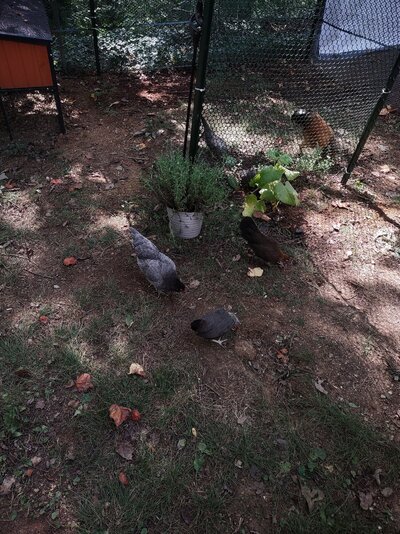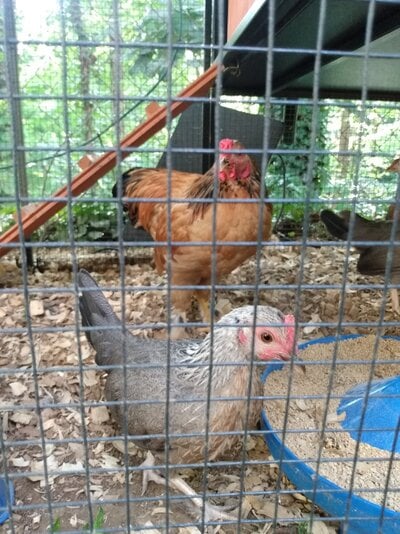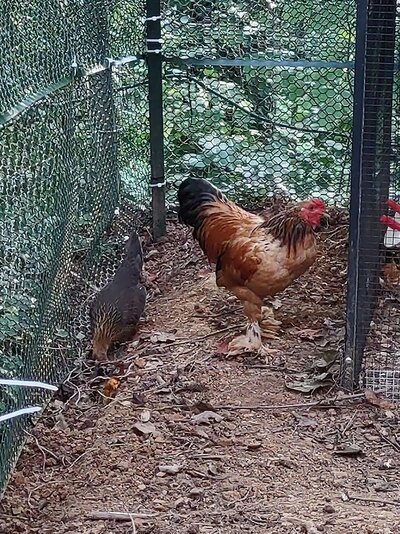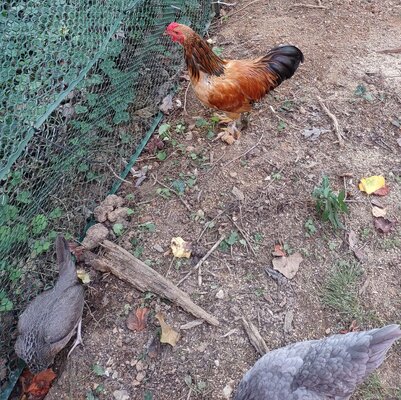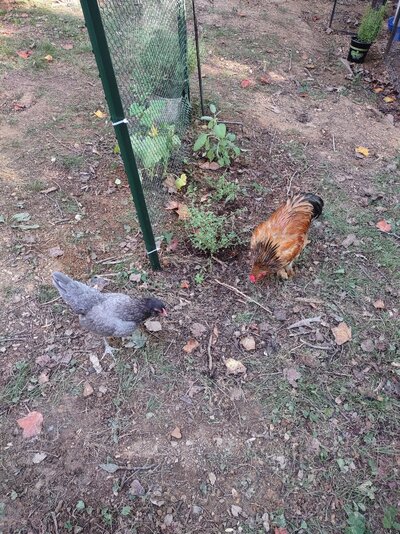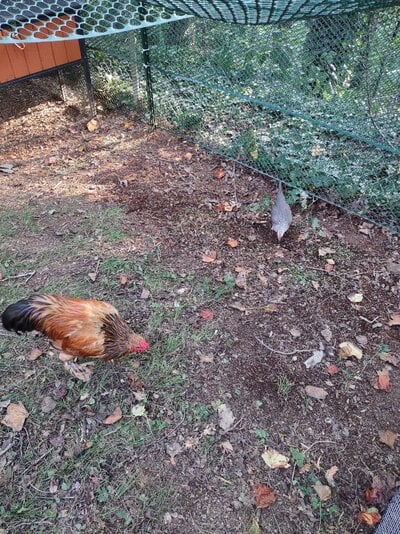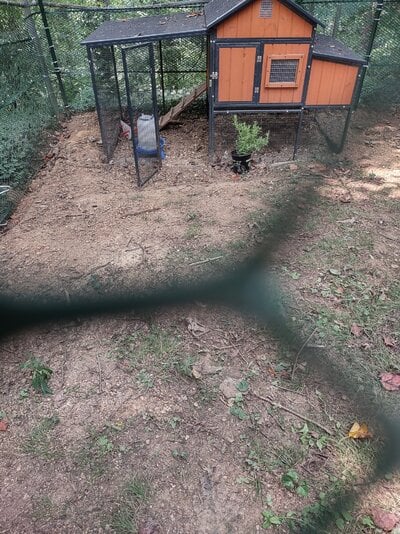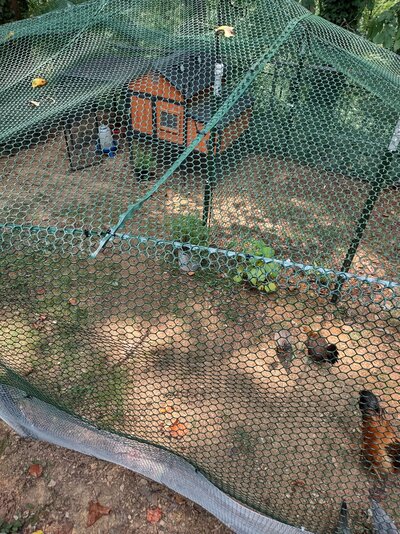SpazzDaUni
Chirping
Hello everyone!
Our small flock is getting so grown up, and we need help making sure everyone is happy. We have a 36 SQ foot coop (a 6H * 6W *6L shed) and a small TSC coop (9 SQ ft). The TSC coop has a 12 SQ ft run attached, and the other coop has a 208 SQ ft run attached. Our problem is with the fact that most of our flock is almost at laying/mating age, and I'm worried about the mixes we have going on. So we have currently four 17 week old OEGB bantam pullets, one 16 week old Blue Sex Link Easter Egger bantam pullet, one 15 week old Buff Brahma bantam cockerel, and four 2 to 3 week old pullets from TSC (EE standard size according to TSC). However, the Buff Brahma bantam cockerel is kind of...massive? He look like a giant compared to my OEGB bantams. So we got the four TSC chicks in hopes that he'd have some girlfriends more his size. But we can't tell if he's a bantam or Meyer's accidentally sent us a standard size? How can I tell? He's almost 2 ft tall when he crows, but his body mass is only mildly bigger than my EE bantam girls. Regardless of his size, should the bantam OEGBs be removed? I tried to separate them earlier, and you'd have thought I started WW3.
But we can't tell if he's a bantam or Meyer's accidentally sent us a standard size? How can I tell? He's almost 2 ft tall when he crows, but his body mass is only mildly bigger than my EE bantam girls. Regardless of his size, should the bantam OEGBs be removed? I tried to separate them earlier, and you'd have thought I started WW3.  He started screaming, they started screaming, my EE ignored their crazy booties, and when I finally gave up my OEGB girls ran STRAIGHT back to him. I'm afraid he'll hurt them by accident if they mate, but I also know they're a very close group (except my EE cause she's a savage). And then I started wondering that if he's actually a bantam, will introducing the TSC standard size pullets when grown might throw off the dynamic? My chickens are my loves and I want them all happy. If there's a way all 10 can co-exist, that would be ideal. I'm willing to buy saddles, trim nails (is that a thing?), etc. I'm sorry I sound crazy.
He started screaming, they started screaming, my EE ignored their crazy booties, and when I finally gave up my OEGB girls ran STRAIGHT back to him. I'm afraid he'll hurt them by accident if they mate, but I also know they're a very close group (except my EE cause she's a savage). And then I started wondering that if he's actually a bantam, will introducing the TSC standard size pullets when grown might throw off the dynamic? My chickens are my loves and I want them all happy. If there's a way all 10 can co-exist, that would be ideal. I'm willing to buy saddles, trim nails (is that a thing?), etc. I'm sorry I sound crazy. 
Any help is appreciated.
Photos because they're all so cute. It's really hard to accurately show the size difference with a camera.
Our small flock is getting so grown up, and we need help making sure everyone is happy. We have a 36 SQ foot coop (a 6H * 6W *6L shed) and a small TSC coop (9 SQ ft). The TSC coop has a 12 SQ ft run attached, and the other coop has a 208 SQ ft run attached. Our problem is with the fact that most of our flock is almost at laying/mating age, and I'm worried about the mixes we have going on. So we have currently four 17 week old OEGB bantam pullets, one 16 week old Blue Sex Link Easter Egger bantam pullet, one 15 week old Buff Brahma bantam cockerel, and four 2 to 3 week old pullets from TSC (EE standard size according to TSC). However, the Buff Brahma bantam cockerel is kind of...massive? He look like a giant compared to my OEGB bantams. So we got the four TSC chicks in hopes that he'd have some girlfriends more his size.
Any help is appreciated.
Photos because they're all so cute. It's really hard to accurately show the size difference with a camera.
Attachments
Last edited:

